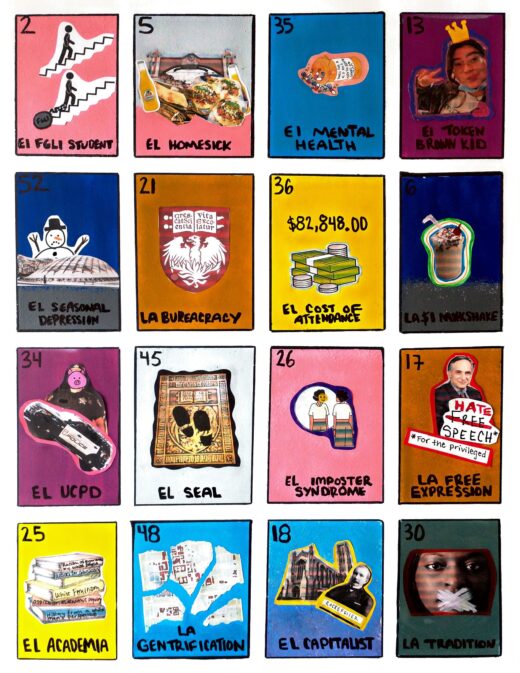Loteria

During my internship at the Smart, I have been able to digest, consider, and reflect the content that Toward Common Cause has to offer through my translation work and my interactions and collaborations with some of the artists. I have learned that the art in Toward Common Cause carries a message, implicitly, or explicitly, bringing to light issues that penetrate deep into the world today. It calls for reflection and action from all members of society, from a child making a Fundred to leverage universal lead prevention to a board of directors shifting the goals and systems of large institutions. Artists like Guillermo Gómez-Peña and Fred Wilson question the institutions in place, especially the ones they are a part of—museums and art spaces. They offer their own critiques through their art and unapologetically point out the dark moments and ideals of the art world. Another artist that I have gotten to know through my engagement in Toward Common Cause is Dr. Amalia Mesa-Bains. Focusing on her identity as a Chicana, she works to make space for herself and others like her in an industry and world that is not meant for people of color nor people with complex identities.
The Toward Common Cause exhibition and its participating artists have inspired me to also think critically about the spaces I occupy and to analyze what it means for someone like me, a Mexican American woman and a FGLI student, to be at an institution like the University of Chicago. Being a low-income student and having immigrant parents, I understand that I am privileged to be here, and I am grateful for the opportunities I have. However, I think it is also important for people to understand that institutions like the University of Chicago and many others were not immediately made for a diverse student body or community. I hope that through satire and a reference that is culturally significant to me (note the Loteria card comes from a Latin American board game), my Loteria artwork shows the issues of academia that are rooted in privilege and discrimination as well as the struggles of FGLI students.
Finally, I want to acknowledge that the artists involved in Toward Common Cause do more than just make art. Many of the artists lead action-based work and participate in forms of activism that make change happen. My critique is just one artwork and just one perspective, and it is important to recognize the student- and community- led organizations and campaigns including Care Not Cops, UC United, UChicago Student Action, Students for Disability Justice, Cops Off Campus Coalition, and many others that push for change and work hard to provide support for diverse groups at the University of Chicago.